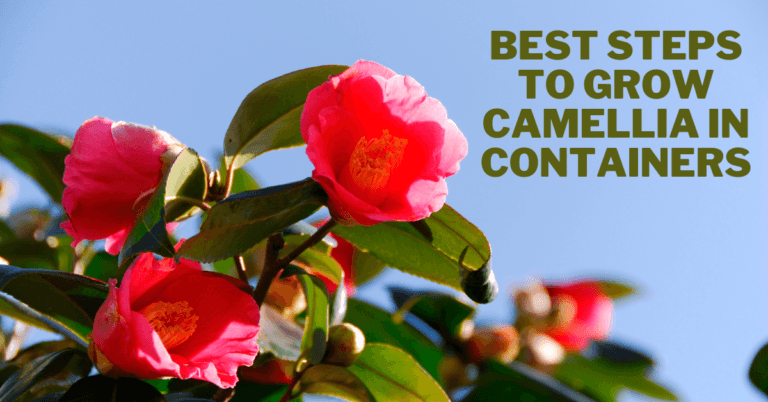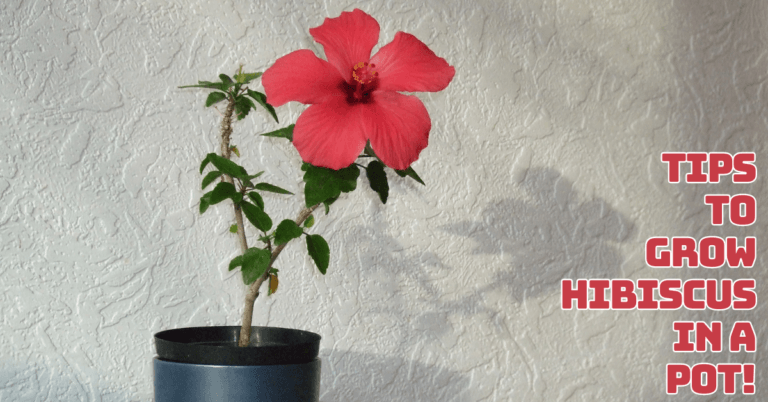9 Steps To Growing Cantaloupe In Containers
9 Steps To Growing Cantaloupe In Containers
Perhaps you have a little yard or a small patio garden that you meticulously maintain. Perhaps your garden is overflowing with greenery, and you don't have room for large, hungry melons.
If you don't have enough space for cultivating your luscious cantaloupe for whatever reason, think again. Cantaloupe can grow in a container, even a small one – if given the proper care so that it may be enjoyed by anybody, anywhere, in any size house or garden.
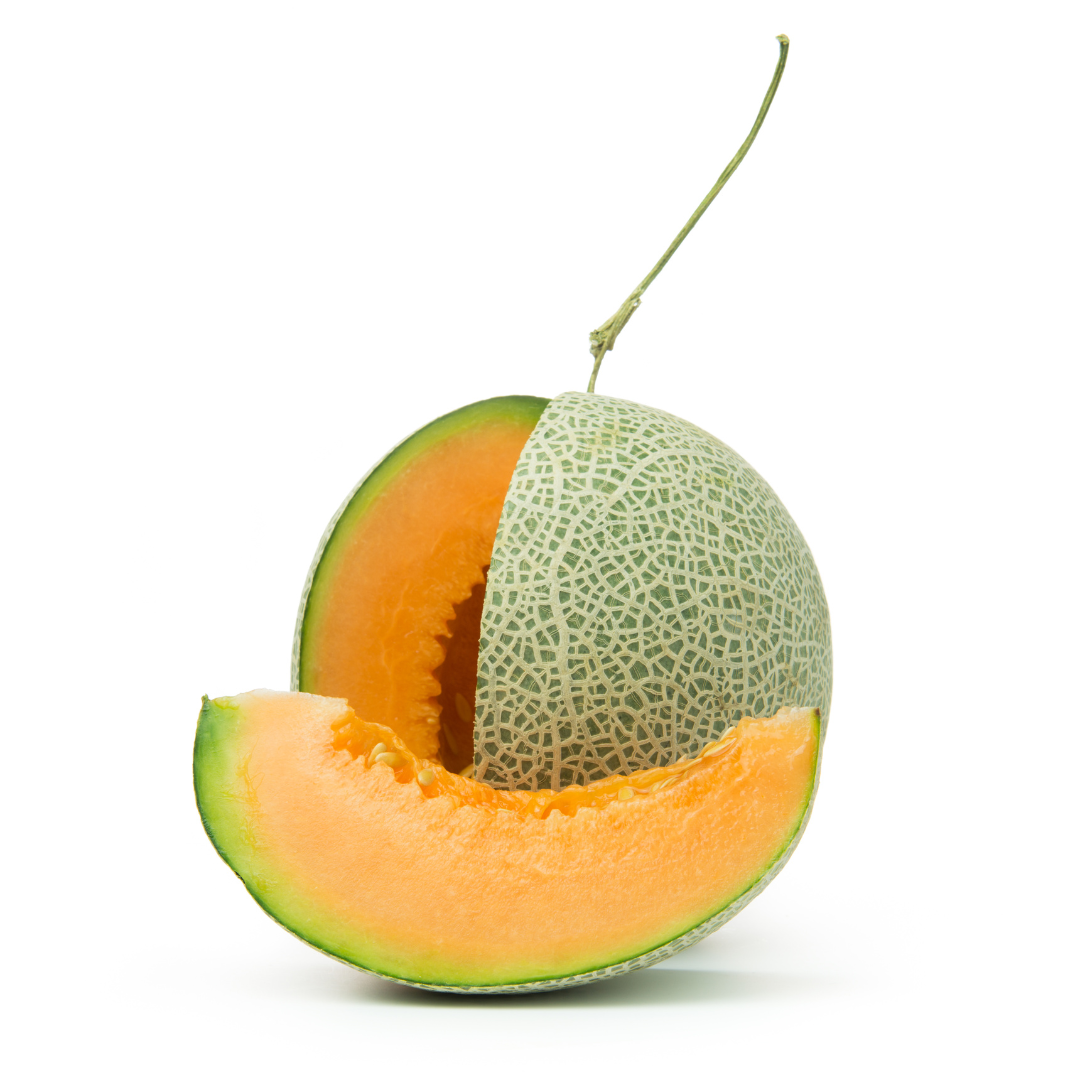
Cantaloupe Nutrition Facts
One cup of raw cantaloupe (177g) provides
- Calories: 60
- Fat: 0.3g
- Sodium: 28mg
- Vitamin A: 299.1mcg
- Vitamin C: 65mg
- Potassium: 472.6mg
- Carbohydrates: 14.4g
- Fibre: 1.6g
- Sugars: 14g
- Protein: 1.5g
The database is from a trusted source the U.S. Department of Agriculture (USDA) provides.

Health Benefits Of Cantaloupe
Cantaloupe is a refreshing fruit that tastes great in the summer. It has numerous health advantages, including:
1. Improves Vision
Eating cantaloupe regularly can help you see better. Cantaloupe contains vitamin C, zeaxanthin, and carotenoids, which improve vision and lower the incidence of cataracts and macular degeneration (an eye disease that causes vision loss, typically in the central field of vision).
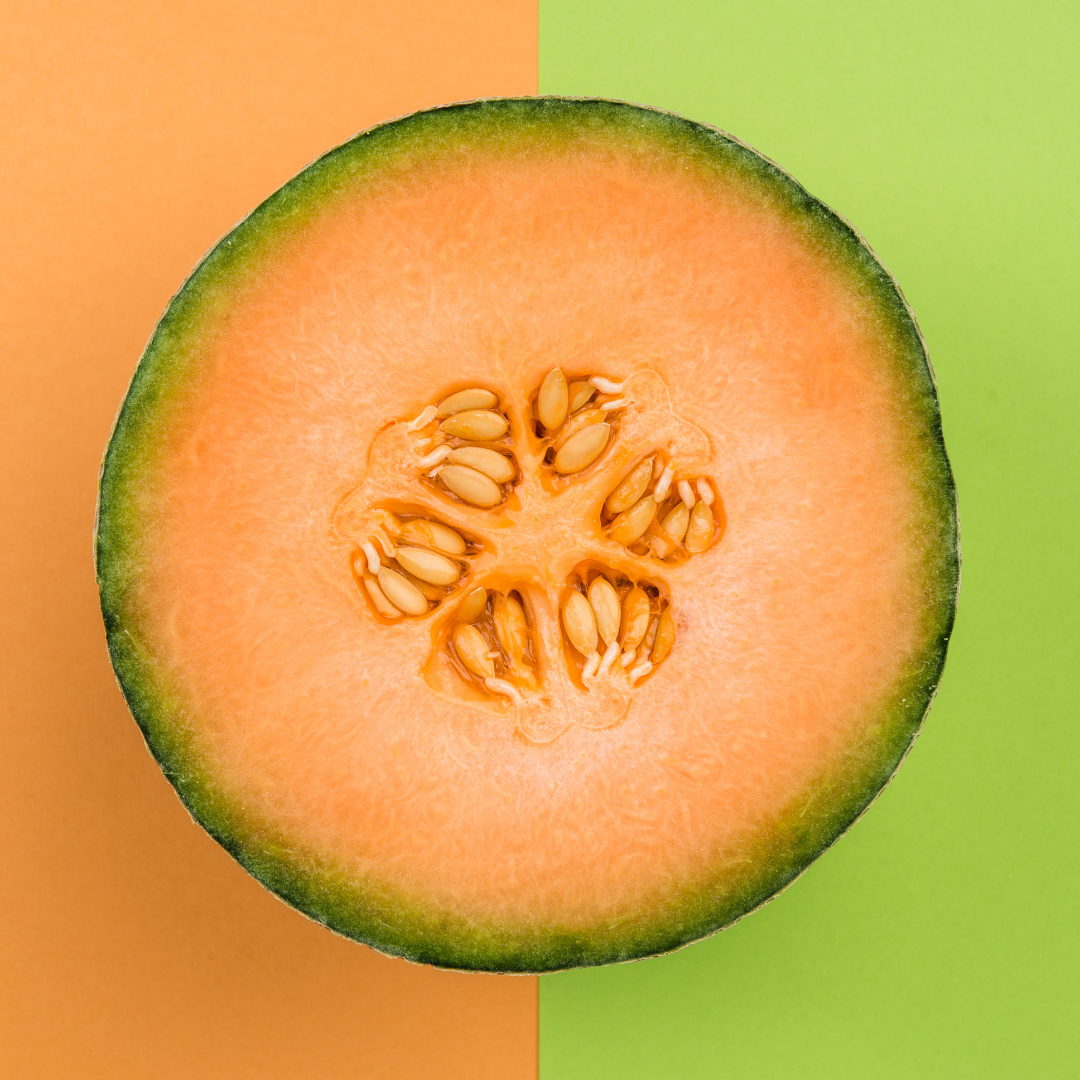
2. Maintains Electrolyte And Fluid Balance In The Body
Water and electrolytes abound in cantaloupe. This keeps the body's fluid and electrolyte levels in check.
3. Controls Diabetics
Cantaloupes have a glycemic load of four, which is considered modest. The term “low glycemic load” refers to the fact that it is slowly digested by your body, preventing a blood sugar surge. As a result, it's ideal for diabetics.

4. Dehydration Is Lessened
Cantaloupes contain 90% water. During the heat, the high water content may help to prevent dehydration. In the summer, a cantaloupe bowl will help replenish lost fluids.
5. Control Blood Pressure
Potassium-rich cantaloupes help to keep blood pressure in check. Potassium aids in the relaxation of blood vessels and the reduction of blood pressure. Constipation can be avoided by eating a high-fibre diet, which helps to promote regular bowel motions and digestive health. Fiber thickens the stool and helps you maintain a regular bowel movement.
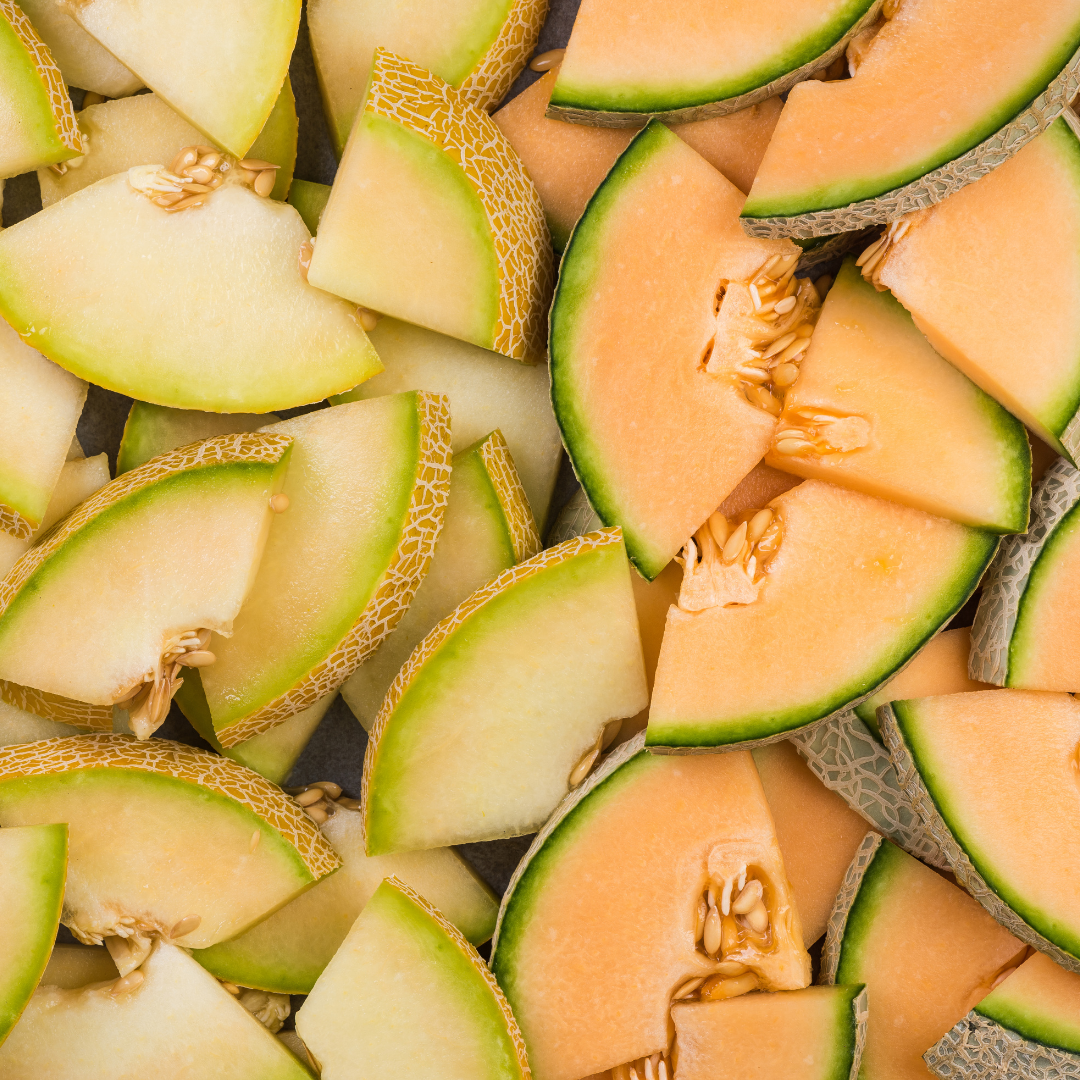
6. Immune System Booster
Phytonutrients are found in abundance in cantaloupe. Phytonutrients boost immunity and help prevent sickness. It has anti-inflammatory capabilities thanks to these chemicals. Vitamin A boosts immunity and aids in the production of white blood cells.
Folate, found in cantaloupe, is one of the most important nutrients for pregnant women, as it protects newborns from neural tube problems. It also aids in forming red blood cells in the body and the mother's and baby's overall health.
7. Prevents Asthma
Animal studies have suggested that eating a lot of the antioxidant beta carotene, a vitamin A, can assist people in avoiding having asthma later in life.
Yellow and orange fruits, such as cantaloupe, contain beta-carotene. A cup of cantaloupe balls (177 g) provides 3,580 micrograms (mcg) of beta carotene.
For males 14 and older, experts recommend a daily beta carotene consumption of 18,000 mc, and for females in the same age group, 14,000 mc.
Vitamin C is an important antioxidant that may help prevent asthma. Certain specialists have suggested Vitamin C pills as a treatment for asthma.
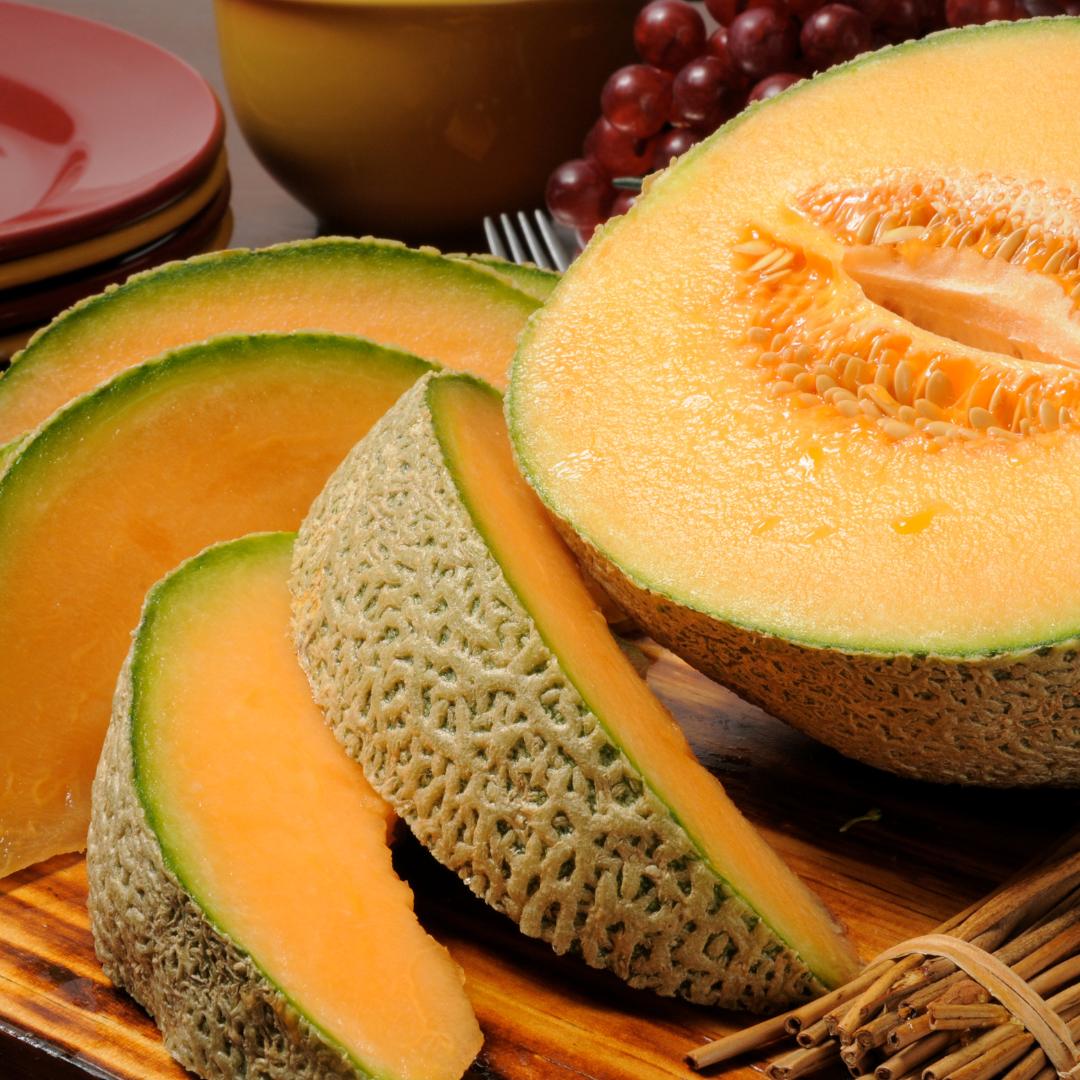
8. Acts As A Highly Effective Anticancer Agent
Folate has been proven to play an important function in cancer prevention studies. Folate may be beneficial in the early stages of cancer treatment. However, when ingested in the late stages of cancer, folate may encourage cancer-forming cells. To learn more about cantaloupe's anticancer potential, more research is needed.
9. Skin Is Nourished, Improves Hair Growth
Cantaloupe contains vitamins that nourish and protect the skin from dangerous pollutants. These minerals and vitamins promote hair growth while also reducing hair loss.

Types Of Cantaloupes
Cantaloupes come in various shapes and sizes. The colour of the flesh, the taste, the size, and the texture of the shells of the many kinds of cantaloupes vary only a little, and they are classified and divided primarily based on their origin. Before growing cantaloupe in containers, you should know all types of cantaloupes.
1. North American Cantaloupe
Some claim that the North American cantaloupe is a muskmelon rather than a cantaloupe. North Americans refer to it as cantaloupe and only a cantaloupe, regardless of whether it is or is not.
The rough, reticulated skin of the North American cantaloupe (Cucumis Melo Reticulatus) distinguishes it from the actual cantaloupe, which has a pale yellow shell. The rind isn't as tough as the True Cantaloupe's, but the flavours and scents are very close.
The raised netting becomes more evident as the fruit ripens, the rind changes colour from greenish to brown while the flesh remains juicy, orange, and aromatic.

2. European Cantaloupe
European cantaloupes, called Cucumis Melo Cantalupensis, are distinguished by their gray-green and stiff rinds. The rinds are either barely or completely netted. There are no spider-web-like crossing patterns on their exteriors, which are smooth, light colours with green stripes. They have musky, sweet scents and flavours.
Cantaloupes are believed to have arrived in Europe from Africa or Asia. Cantaloupes were mistakenly named after the Italian town of Cantalupo, where they were chosen after coming from their origins.
Why are European cantaloupes thought to be the only true cantaloupes? Some say these are genuine cantaloupes, while others argue that the other types aren't.

3. Asian Cantaloupe
Some people claim that the earliest cantaloupes came from Asia. The delectable, musky fruit's origins remained in Asia, particularly in Persia, earning it the appellation Persian melon or Hami melon.
The Asian type isn't as well netted as the North American variety, and the flesh isn't as vibrant. Asian cantaloupes (Cucumis Melo Reticulatus) feature pale orange flesh, milder tastes, and a fine netting on a pale green or yellowish background. The flesh is crunchy, whereas a North American cantaloupe's flesh is normally soft and pulpy.

4. Japanese Cantaloupe
The Japanese cantaloupe, often known as the crown melon, is distinguished by its huge size. In the area, the Yubari King melon, as it is known, is frequently sold for royal prices.
They're extremely expensive, and those who can afford them use them as a status symbol. In Japan, fruits are often regarded as high-end items, with melons being the most expensive.
Yubari melons are a favourite gift choice among the wealthy. The Yubari King is named after Yubari, a small Japanese hamlet where it is grown exclusively. Each Yubari melon is farmed with great care and precision.
The stems are cut to the same length, the seeds are manually pollinated, and the fruits are massaged by hand; it's time-consuming.
Cantaloupe is revered in Japan not just for its flavour but also for its look. It warrants the costly costs and moniker of ‘king' linked to its name, perhaps because of the royal treatment it receives during its cultivation.
Japanese melons have a silky smooth rind and a perfectly spherical shape. They have delicate yellow/orange flesh on the inside. The melons are then elegantly packaged and sold for up to $200 each.

5. Galia Cantaloupe
The Galia cantaloupe is a common type in Southeast Asia. It is an Israeli variety. This melon, commonly confused with a cantaloupe, is known locally as Sarda. The Galia's flesh is tasty and pale yellow or green.
Cucumis Melo var. Reticulatus is the scientific name for Galia melons. It's a cross between a cantaloupe and a melon that looks like a cantaloupe on the outside but tastes like a honeydew melon on the inside.
Galia melons are smaller than European and North American cantaloupes, and they're usually eaten raw or chilled. Galia melons are delicious and healthy, including various minerals, vitamins, and bioflavonoids. They are a popular post-dinner fruit in South Asian countries due to their low calorie and fat content.
6. Relatives And Hybrids
The distinction between cantaloupes and melons is quite hazy. It is becoming increasingly muddled to the point where the term cantaloupe currently refers to all fleshy melons with netted or un-netted rinds.
Scientists and botanists have attempted to cross-breed different types of cantaloupes and melons to generate higher-quality hybrids. Disease resistance, flavour, shelf life, texture, and other characteristics of different types of cantaloupes and melons were combined to create hybrids. The seed region of the hybrids is also smaller, allowing the juicy flesh to fill the rest of the fruit.
7. Charentais Cantaloupe
Charentais Cantaloupes, commonly known as charentais melons, is a type of French melon that originated in western France's Poitou-Charentes region. It is widely considered one of the best melon cultivars ever developed, exceeding its competitors in flavour, fragrance, and texture.
The charentais melon is smaller than most melons, with a size similar to that of a grapefruit and an average weight of about 2 pounds. The meat is vivid salmon-orange and thick, with smooth, stony creamy-gray skin and slightly green ribs. The fruit is sweet and fragrant, with high sugar content.
Cucumis Melo Cantalupensis is their scientific name, although they're more generally known as French Cantaloupes. Even though they originated in France, most of the manufacturing is now done in North Africa. Because of their rich beta-carotene, folic acid, and dietary fiber content, cantaloupes are popular in summer.
Growing Cantaloupe In Containers
Now I’m sharing all steps that will help you to grow cantaloupe in containers perfectly. Let’s get started.

Step 1: Selecting The Right Container
Choose a pot at least 16 inches deep and 14 inches wide, as these vining plants require lots of room for their roots to flourish.
If you have the space, consider these massive whiskey barrel planters from Home Depot to grow full-sized varietals.
Indoor or patio gardeners may want something smaller and more portable. You can choose a pot made of durable plastic, terra cotta, or breathable fabric.
You're set to go if it has good drainage and holes in the bottom or a self-watering planter insert. You can also add stones to the bottom of the container for drainage if necessary – and if you don't plan on moving it.
Step 2: Planting Mix For Containers
Cantaloupe thrives in high-quality potting soil with plenty of organic content and either perlite or vermiculite. Combine clean topsoil with compost or well-rotted manure to build your own planting mix. Perlite or vermiculite and a thin layer of mulch on the top will help the soil retain moisture.
To give the seeds or transplants an extra boost, add an all-purpose, slow-release fertilizer to the container when planting, or wait until the seedlings are 6 inches tall and apply a 5-5-5 liquid fertilizer.
When it comes to fruits and vegetables, I always prefer organic fertilizer.

Step 3: Location
When choosing a location for your cantaloupe plants, remember that this is a warm-season crop that needs good drainage and plenty of sunlight, as well as temperatures between 65 and 90 degrees Fahrenheit (18 and 32 degrees Celsius) to thrive.

Step 4: Watering
Melons require consistent watering and soil that is evenly moist. Cantaloupes are no exception! Water the plants thoroughly until the water drains freely from the bottom, and maintain the soil moist but not saturated at all times. Also, don’t get the foliage wet.
Step 5: Fertilizer
Use a complete liquid fertilizer to begin fertilizing the plant. When the plant's blossoms appear, switch to a nitrogen-free fertilizer. Mix 6-7 teaspoons of Epsom salt and 3-4 tablespoons of household borax in 5 gallons of water to make the fruits sweeter. Stir the solution thoroughly before spraying it on the vines.

Step 6: Keep Your Eyes Peeled For The Blossoms
Every fruit-bearing vine has its personality. They grow both female and male flowers. The female flower develops into a fruit after being pollinated by the male bloom. When the blooms appear, keep an eye on them because the female flower only stays open briefly. It will not bear fruit if pollination does not place within this time frame.
The male flowers bloom first, followed by the female flowers a few days later. The male and female can be distinguished by their stalks. The stalk of the former is narrower, whereas the stalk of the latter is rounder.

Step 7: Pollination Needed By Hand
Pollination takes place with the help of bees on a farm or in a field. However, if you want to cultivate cantaloupes in a container on your balcony or terrace, you’ll have to take matters into your own hands practically! Are you unsure of how to proceed?
The procedure is straightforward, but you must pollinate the female flowers while still open. If it closes before then, you’ve already missed your chance to cultivate sweet cantaloupes. Pluck 1-3 male flowers when you observe the female flowers unfold their petals.
The male blooms have tiny golden pollens in the center, which you may see if you look closely. These must be transferred to the bud of the female flower. After a few hours, you’ll notice that the female flower’s petals have closed and the bud has been covered. The mission has been completed! In a few days, it will begin to produce a cantaloupe fruit.

Step 8: Harvesting
It doesn't matter how much effort you've put in up to this point; if you harvest the crops while they're still young, it'll all be for naught. After the female flower has been pollinated, the fruit takes 35-45 days to ripen. Look for signals of ripeness, such as the colour changing from green to orangish-yellow, a fruity odour when you get close to the stem, a hollow sound when you hit the fruit with your knuckles, or the rind softening.
When the fruit readily detaches itself from the stem with only a tiny movement, you know it's time to harvest.
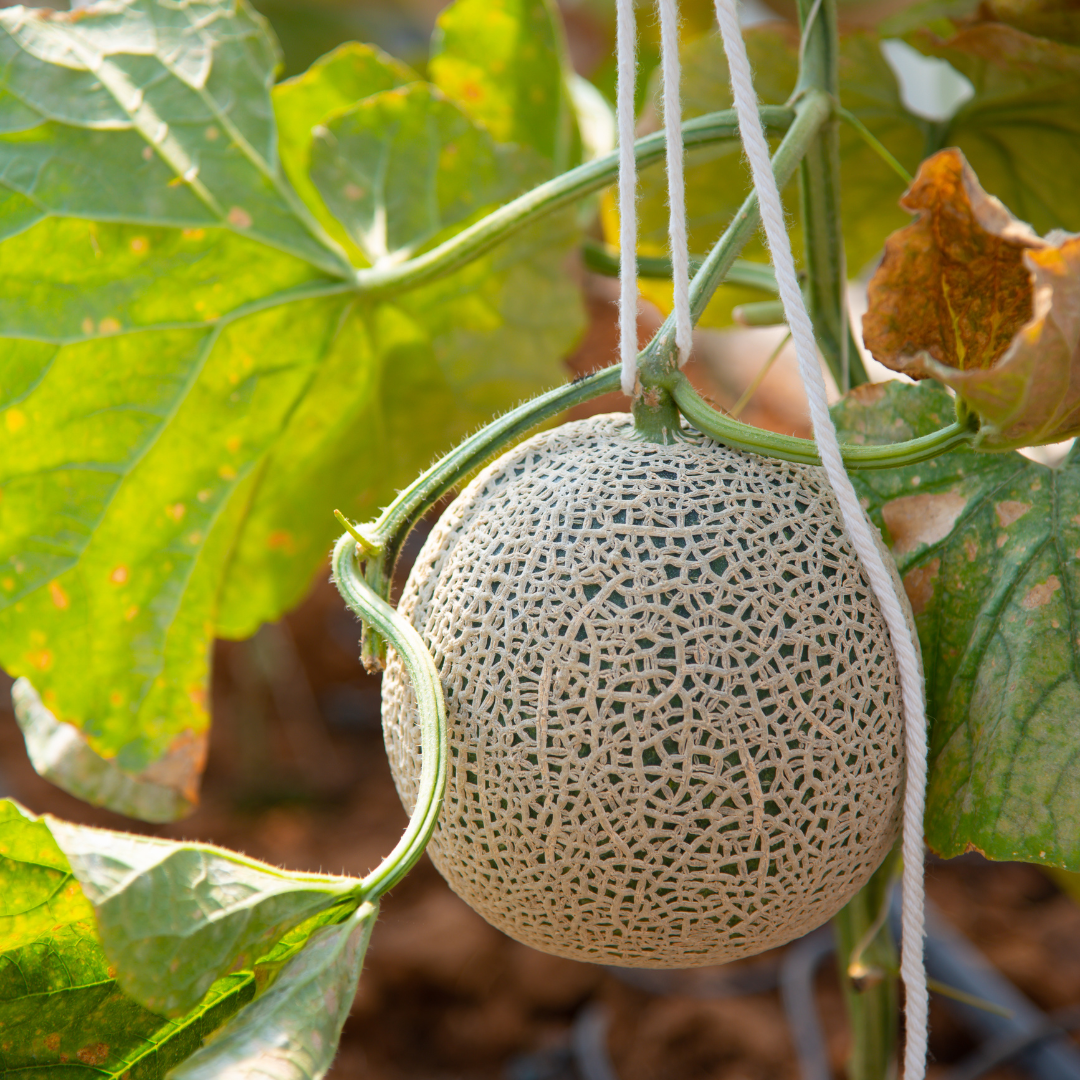
Step 9: Additional 4 Tips For An Excellent Crop
- Cantaloupes require a lot of water, ensuring the soil is moist. When watering the plants, avoid getting the foliage wet.
- To avoid rotting, keep the young fruits above the ground. You can rest the fruits in antique pots turned upside down.
- Healthy leaves are going to produce sweeter fruits; avoid pinching the shoots.
- Keep the largest fruits on the vine and pinch off the young ones for the finest flavour.
Pests & Diseases Of Cantaloupes
You can keep a closer eye on the plants and nip any infestations in the bud because you're growing them in containers.
- Spray the vines and foliage with a powerful blast of water, then use diatomaceous earth – which can also assist with squash bug infestations – to control aphids.
- Aphids, cucumber beetles, cutworms, and squash bugs can all cause harm to cantaloupe.
- If you have a bad infestation, you can use neem oil or insecticidal soap to remove cutworms and cucumber beetles.
- The fungus Alternaria cucumerina causes Alternaria leaf blight, which affects plants in hot, humid circumstances.
- Small brownish-yellow spots appear first, then become larger and spread to neighbouring leaves.
- Remove the infected leaves and apply a fungicide to them. Bring your plants indoors during extremely hot and rainy weather to avoid this problem.
- Downy mildew is a bothersome illness that creates dark blotches on leaves and finally destroys them.
- Pseudoperonospora cubensis causes it, and the best treatment is a fungicide. Keep the plant out of extremely humid environments and prevent overhead watering to avoid it in the first place.
Conclusion
I hope you found the tutorial to be informative and entertaining. With the rising concern about food adulteration and the overuse of chemical fertilizers, it's impossible to know what you'll get when you get home.
One of the reasons I became interested in growing my own veggies and fruits was this. If you're worried about the same things, don't let a lack of space stop you. Use this technique as a starting point for producing your own cantaloupes in a container.
I trust you enjoyed this article on the 9 Steps To Growing Cantaloupe In Containers. Please stay tuned for more blog posts to come shortly. Take care!
JeannetteZ
>>>Please click here to read my all-inclusive article about Container Gardening<<<
Are you interested in homegrown herbs and medicine? Please click here to find out more about it!
Your Opinion Is Important To Me
Thoughts? Ideas? Questions? I would love to hear from you. Please leave me your questions, experience, and remarks about this article on the 9 Steps To Growing Cantaloupe In Containers in the comments section below. You can also reach me by email at Jeannette@Close-To-Nature.org.
Disclosure
This post may contain affiliate links. I earn from qualifying purchases as an Amazon Associate and other affiliate programs. Please read my full affiliate disclosure.
You might also enjoy these blog posts:
Simple Ways To Grow Mulberries In Pots
9 Tips To Growing Fig Trees In Containers
10 Steps To Growing Blueberries In Containers
Follow 10 Steps To Growing Banana Trees In Containers
9 Steps To Growing Swiss Chard In Containers




